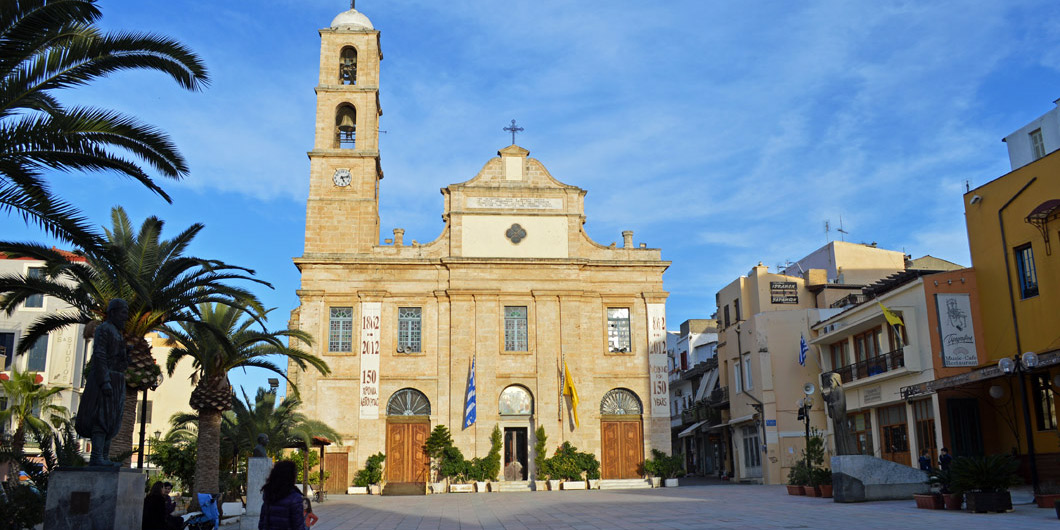The Panagia Trimartiri is considered as the protector of the city of Chania. The central aisle is dedicated to the Presentation of the Virgin Mary (Isodia tis Theotokou), which is celebrated on November 21. The northern aisle is dedicated to St. Nicholas (Agios Nikolaos) and the southern aisle to the Three Cappadocian Fathers (Tris Ierarhes).

The church is built on the site of an earlier church, which had reportedly existed here since the 14th century. Later, with the conquest of the city by the Turks, in 1645, the church was turned into a soap factory as it stood, with no alterations in the layout.
From there on, its history has been intertwined with local legends. According to tradition, the soap factory failed at some point and Mustafa Pasha, who was the Prime Minister of the time, ceded the building to the Christian community of the city.
Legend has it that Mustafa Pasha made this decision when his child, who had fallen into a well nearby, was saved with the help of the Virgin Mary.
The construction of the church was complete in 1860, resulting in the building that we see today: a three-aisled basilica with an elevated middle aisle and numerous architectural elements of Venetian influence, such as carved square columns, cornices, etc. Then, the icon of the Presentation of the Virgin Mary, which had been taken away by the last worker of the soap factory, was restored to the church.
The history of the Panagia Trimartiri church is tied into the history of the city itself. It was frequently used as a place of refuge and it suffered much damage during the Cretan revolt of 1897. Its renovation was undertaken by the Czar of Russia, and the bell tower was also built thanks to his donation. Trimartiri also suffered a lot of damage during the bombing of Chania in May 1941.



